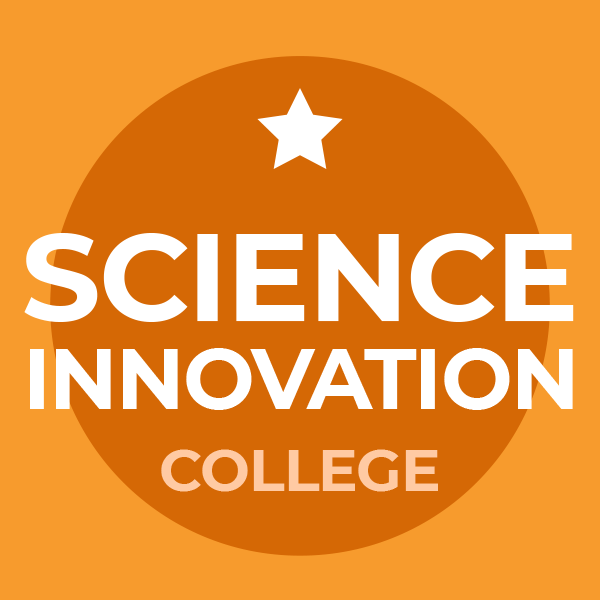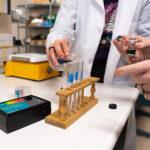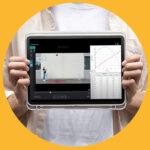
Sharing ideas and inspiration for engagement, inclusion, and excellence in STEM

Note: A version of this story was originally posted on the Vernier website in March 2020.
Does a generic sunscreen absorb UV light as well as a name-brand sunscreen? Does expired sunscreen still work?
These are two questions that Douglas Harris, PhD, asks his students at Utah State University to answer by completing the “Absorption Spectrum of Active Ingredients in Sunscreens” investigation.
Harris and a colleague developed this beginning-of-the-semester experiment to teach students how to perform dilutions, an important process used in later biochemistry experiments, as well as how to accurately analyze data.
Investigating with a Spectrophotometer
In the experiment, students extract the active ingredients from two sunscreens using isopropyl alcohol and then create a 1:10 dilution to test.
Students collect and record their spectra for these active ingredients using the Vernier UV-VIS Spectrophotometer and compare each for UVA and UVB radiation exposure protection.
“After using Vernier technology in some of my other courses, I saw how powerful it could be in this investigation,” Harris said. “The UV-VIS Spectrophotometer helps students easily and accurately collect data and measure the absorbance spectra of their samples.”
Through their data analysis, students found that a sunscreen’s effectiveness depended on the brand, but they also found that generic brands sometimes outperformed the name brands. In addition, they found that expired sunscreen often effectively absorbed UV radiation as well as unexpired sunscreen.
Further, when testing a specific brand of sunscreen, students found that the absorption of the 100 SPF version was about double the absorption of the 50 SPF version.
“The students can see all of these findings in real time using the spectrophotometer,” Harris said.
Consistent Results in Chemistry
For more than 15 years, Harris has used Vernier technology in his courses to highlight key chemistry concepts, including teaching students about amino acid titrations using pH sensors and studying reaction kinetics of nail polish remover with dilute sodium hydroxide using conductivity probes.
“The use of technology is second nature to today’s students,” Harris said. “The Vernier data-collection technology is no exception—it’s intuitive for them to use technology to gather the data they need.”
“Technology can be frustrating if it does not produce consistent results,” he continued. “Through the years, Vernier technology has always provided my students with reliable and accurate data, plus the company has always offered great support with questions.”
Download this investigation, “Absorption Spectrum of Active Ingredients in Sunscreens.”
Douglas Harris, PhD, has worked as a lecturer for Utah State University’s Department of Chemistry and Biochemistry for more than 15 years. He has a doctorate in biochemistry.
Share this Article

Sign up for our newsletter
Stay in the loop! Beyond Measure delivers monthly updates on the latest news, ideas, and STEM resources from Vernier.






